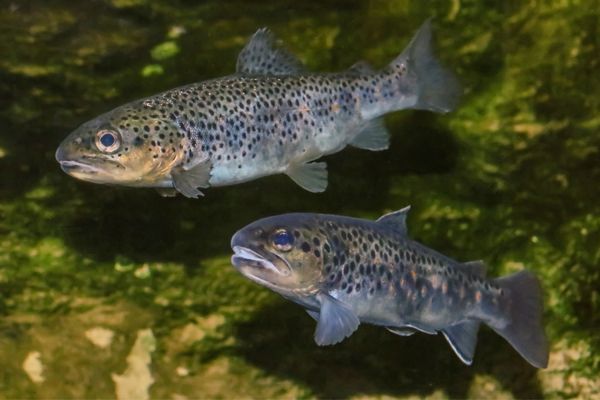The exact number of trout species is ambiguous and debated by taxonomists. Some conservative opinions consider the brown trout Salmo trutta to be the only true trout. While others are willing to identify, dozens if not hundreds of unique trout species
In this article, I will explain why and will attempt to answer how many species of trout there are.
The exact number of species is up for debate
The brown trout was the original trout.
Most people will also include the likes of Rainbow trout (Oncorhynchus mykiss), or the brook trout (Salvelinus fontinalis) as additional species. There are still people willing to argue, that either of these fish are not trout, because Rainbow trout are pacific salmon and a brook trout is a char. I, and I think most people do not agree with such narrow definitions.
So we have the three main species of trout, but there is still one more we can add to this list. That is the Lenok (Brachymystax lenok), or Manchurian trout found in Russia and East Asia.
So, now we have a representative of the four main groups or using scientific terminology genus of trout.
Are there more than four species of trout
There are multiple species of trout within each genus, I will go into much more detail and will list many of the potential species within each of the four genera. It does become controversial trying to determine what is a distinct species, versus a subspecies versus a form or morph.
Taxonomists have been arguing about where to draw the line for decades and it is constantly changing.
Read more about unusual trout in the articles below.
- Trout, Salmon, and Char hybrids.
- The world’s largest trout (bigger than IGFA record)
- Meet the Manchurian trout (Lenok)
- What Is a golden trout? (Golden trout vs Palomino?)
- Lake Ohrid brown trout – The most ancient brown and one of the biggest.
- Introducing the cherry trout (Masu salmon)
- Introducing the Lake Grada trout- Maybe the strangest trout in the world.
- Lake Sevan trout (A brown trout that spawns in spring?)
How many species within Oncornhynchis
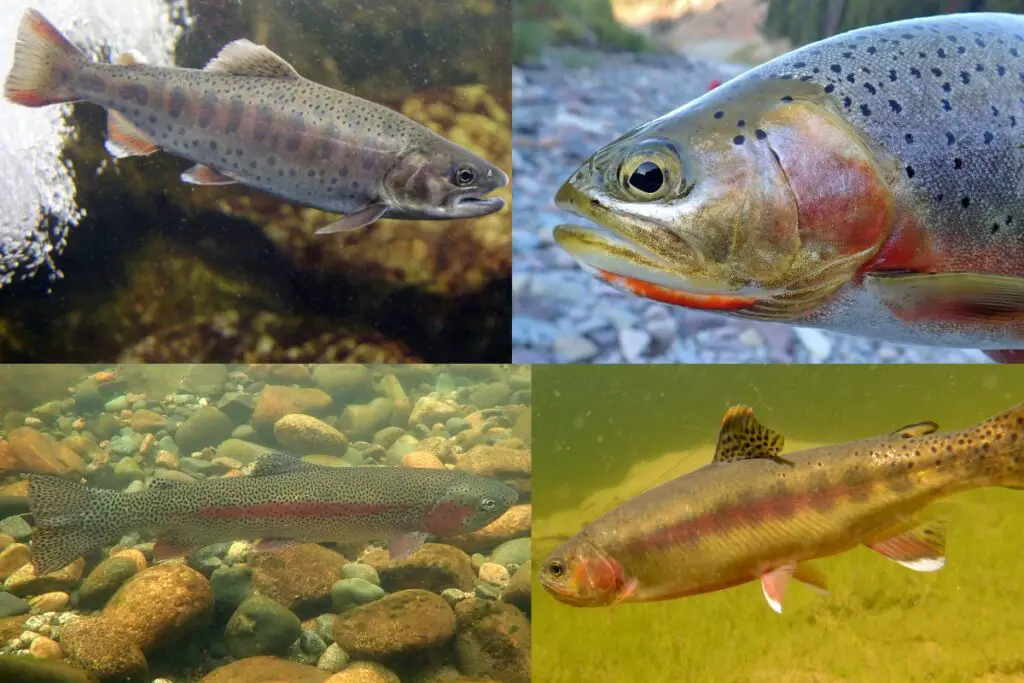
I am going to start with the Oncorhynchus genus, this one includes the rainbow trout and about 7 species of salmon.
There are also multiple species of trout within Oncorhynchus. The Rainbow is joined by the Cutthroat trout (Oncorhynchus clarkii) and the Golden trout (Oncorhynchus aguabonita).
But it is not that simple, because some people argue that Rainbow trout can be split into 10 groups, while four subspecies of cutthroat are listed. There are two other subspecies that are closely related to the golden trout.
There is also the Apache and Gila trout. (Although they are more closely related than the four subspecies of cutthroat trout)
So complicated, and I have not even discussed the Mexican native trout,
Moving south of the border we have at least 14 identified forms, all landlocked within the Mexican trout population. Depending on who you consult they are either forms, subspecies, or species in their own right.
Out of all these forms, only one has an official scientific name the Mexican golden trout O. Chrysogaster, but things are never that neat. The latest research indicates that there are four genetically unique populations within the Mexican golden trout species complex.
So, this does a messy job of wrapping up the Oncorhycnus species native to North America.
Timeline of Pacific trout
- 15-20MYA: The divergence between Pacific Salmon and Pacific Trout
- 10MYA: Divergence between Rainbow and Cutthroat
- (Apache Trout, Gila Trout, and Mexican Golden Trout diverged from an ancestral rainbow trout lineage, and are considered to be the most divergent group)
- 0.15 and 1.3 MYA: Divergence between Apache and Gila
Notice how I said in North America, will there are potentially more trout species belonging to Oncorhynchus in Asia.
Introducing the Cherry trout (Oncorhynchus masou), Now there is a lot of debate surrounding the Cherry trout, is it a trout or is it a salmon? Genetically it is more related to the pacific salmon, It also goes by the name Masu salmon. Although, cherry trout, just like other trout are repeat spawners. So they have a foot in each camp.
Cherry trout can be split into five sub-species (Although some people argue there are separate species)
There are at least five sub-species
- O. m. masou— masu salmon, anadromous (sea-run) form
- O. m. Ishikawae (Yamane trout)
- O. m. ariwame (Iwame trout)
- O. m. Rhodurus (Biwa trout)
- O. m. macrostomus (Amago)
- O. m. Formosanus (Taiwanese salmon)
But, let’s just count them all as one.
Trout in the Oncorhynchus genus
- Rainbow trout ( Oncorhynchus mykiss)
- Cutthroat trout (Oncorhynchus clarkii)
- Golden trout (Oncorhynchus aguabonita).
- Gila trout(Oncorhynchus gilae)
- Apache trout,(Oncorhynchus apache)
- Mexican golden trout (Oncorhynchus Chrysogaster)
- Cherry trout (Oncorchychus Masu)
How many brown trout species (Salmo)?

I decided to discuss Salmo second, simply because the Brown trout species complex is extremely complicated.
There have been up to 50 distinct trout species listed within the Salmo genus. The majority of which, are isolated to a single population confined to small rivers or lakes.
This is a very controversial list because some experts argue for more species. For example retired Professor of trout genetics, Andrew Ferguson believes there are currently over 40 brown trout species currently classified beneath “Salmo trout”, while others argue that there should be fewer, and the majority of them should just be sub-species or morphs of Salmo-trutta and there are only one species of brown trout.
The prevailing view seems to suggest that brown trout can be broken into 9 lineages,
The main brown trout lineages
- Mediterranean,
- Adriatic
- Mediterranean
- Marmoratus
- Danubian
- Danubian‐Black Sea
- Eastern Danubian
- Atlantic
- Atlantic
- Duero
- Outlier populations
- Tigris-Turkey
- Dades-North Africa
I am not going to discuss them all in detail. There are simply too many. But I will briefly go over some of the more interesting species.
By far the most widespread trout within Salmo is Salmo trutta, which belongs to the Atlantic lineage. This is the brown trout form that has been introduced to the New World and is now found throughout the Americas,s, parts of Asia, and Oceania.
But, even within Salmo trutta the naming conviction is not that simple. Historically they were split into three main morphs or even sub-species, the river trout, the lake trout, and the sea trout.
The German brown trout that made up the bulk of the releases in America were from the first two groups, river and lake trout. This is the likely reason why brown trout failed to establish any significant sea-run populations in North America.
Meanwhile, the trout introduced to South America, New Zealand, and Australia were for the most part River and Sea trout, which is why these countries now have sizeable sea-run brown trout fisheries.
As an example of just how diverse Salmo trutta is, I am going to give a brief summary of the trout found in the British Isles. I have written a much longer article discussing them also.
Lough Melvin in Northern Ireland is inhabited by three forms of Brown trout. Their common names are the sonaghen, gillaroo, and ferox. All three are genetically distinct, spawn at different times, and locations and have different feeding habits. Despite coexisting, probably since the last ice age, they do not seem to interbreed.
The ferox form is the most interesting, and the debate is ongoing on whether it should be considered a distinct species in its own rights. The wildtrout trust, has an article that goes into the debate in more detail. Ferox trout live in isolated populations, in deep glacier lakes and lochs across the British Isles. These trout, are genetically more similar to each than the other wild brown trout they coexist with.
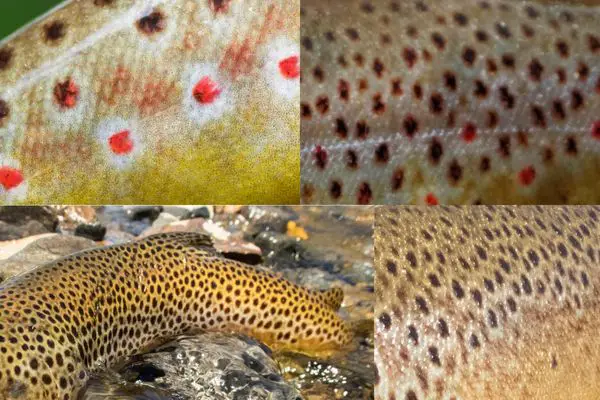
The most well known species of brown trout, that is not Salmo trutta will have to be the marble trout (Salmo marmoratus), found in Italy and the Balkans. It has a very distinct, marble pattern on its back. I will also note, that is high levels of genetic diversity even between populations of marble trout. There seem to be between 500,000-2.5 million years of divergence between the Atlantic lineage that contains S. Trutta and the Marmoratus that contains the marble trout.
Staying in Italy, there is also the Grada trout. This might be the strangest of all the brown trout that I know about. This landlocked trout in some ways more closely related to Atlantic salmon than S.trout although it is a hybrid between the Adriatic and the Marmoratus lineages. I said it was strange because it does not spawn in rivers, but around deep water springs.
I have not even discussed all the Italian trout variants (it is complex), but will leave Italy now, and discuss the Ohrid trout, these trout are endemic to Lake Ohrid and are widely considered to be one of the most ancient lineages of brown trout. It is believed they split away the S. trutta lineage some 4 million years ago. Lake Ohrid is home to two distinct species of brown trout.
This is because Lake Ohrid is one of Europe’s, oldest and deepest lakes. The trout there have been geographically isolated for a very long time. During the 1960s there were attempts to establish them in North America, but the population never become established.
I could now move further east and discuss the likes of the Sevan trout, Caspian trout, or even the Amu-Darya trout that are isolated in the foothills of central Asia. But, this section is getting too long. So I will briefly mention two of the most geographically isolated Brown trou.
The Tigris and Euphrates trout that live in the headwaters of the same number are believed to have diverged from the main Turkish population between 1–2 million years ago. I find these trout fascinating due to how geographically isolated they are. Anyone interested in geology will realize these rivers flow through Iraq and into the Persian Gulf. Sometime during the Pliocene, the headwaters of the Euphrates changed from flowing into the Black sea to the Persian gulf trapping a population of trout in the process.
Lastly, one species of trout in Morroco also managed to jump a dividing range and found itself in a river that drains into the Sahara desert. The various brown trout have managed to get themselves into some weird and wonderful places.
Number of brown trout species
Keep in mind, the debate continues on the exact species classification. This is not an exhausted list of proposed, or potential brown trout species, or subspecies. Just an indication.
Atlantic brown trout
- Salmo trutta
- Trutta (sea trout)
- Fario (brown trout)
- Lacustris (lake trout)
British Isles
- Salmo nigripinnis (Songahen)
- Salmo stomachicus (Gillaroo trout)
- S. t ferox (Ferox trout)
France / swistzerland / Austria
- Salmo rhodanensis
- Salmo schiefermuellei
Persian gulf and turkey
- Salmo abanticus
- Salmo baliki
- Salmo coruhensis
- Salmo euphrataeus
- Salmo kottelati
- Salmo labecula
- Salmo okumusi
- Salmo opimus
- Salmo platycephalus
- Salmo rizeensis
- Salmo tigridis
Caucasus and Central Asia
- Salmo caspius
- Salmo ciscaucasicus
- S. t. Aralensis (Aral sea trout)
- S. t. Oxianus (Amu-Darya trout)
- Salmo ezenami
Black Sea / Lake sevan
- Salmo labrax
- Salmo ischchan ischchan (extinct)
- S. i. aestivalis
- S. i. danilewskii (extinct)
- S. i. gegarkuni
Italy, Greece, and Balkans
- Salmo carpio (Garda trout)
- Salmo cettii
- Salmo fibreni
- Salmo marmoratus (Marble trout) (500,000-2.5 million year divergence)
- Salmo farioides
- Salmo dentex
- Salmo macedonicus
- Salmo montenigrinus
- Salmo obtusirostris (including 5 subspecies or morphs, 2.5 million year divergence)
- Salmo taleri
- Salmo lourosensis
- Salmo pelagonicus
- Salmo peristericus
Ohrid trout (Sub group)
- Salmo letnica
- Salmo aphelios
- Salmo balcanicus
- Salmo lumi
- Salmo ohridanus (distinct form – 4 million year divergence)
Morroco
- Salmo akairos
- Salmo macrostigma
- Salmo multipunctata
- Salmo pallaryi (extinct)
- Salmo pellegrini
- Salmo viridis
How many trout species with the Manchurian trout genus ( Brachymystax)
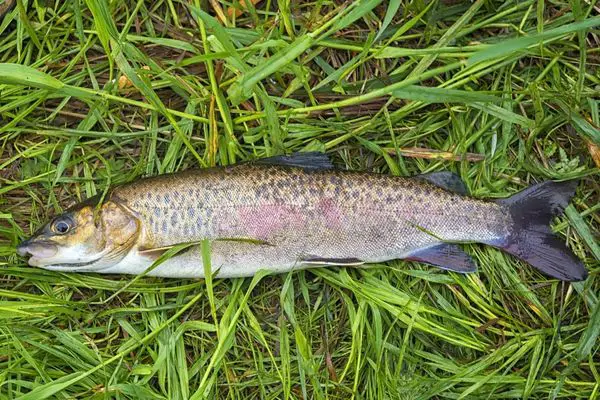
This is going to be a short section for two reasons. I do not have a lot of knowledge about them and I am not going to go digging into any taxonomical debates, and secondarily there are only four recognized species within Brachymystax. Although some argue there is one species and four subspecies.
Lenoks are the most genetically distinct from the other three trout genera. The ones I have seen are quite strange looking fish with very distinctive round snouts. For more information regarding lenoks check my article here.
As far as I know, Lenok’s can not hybridize with the other trout species.
The four recognized species of lenok are
- Brachymystax lenok
- Brachymystax savinovi
- Brachymystax tumensis
- Brachymystax tsinlingensis
How many trout belong in the char family (Salvelinus)
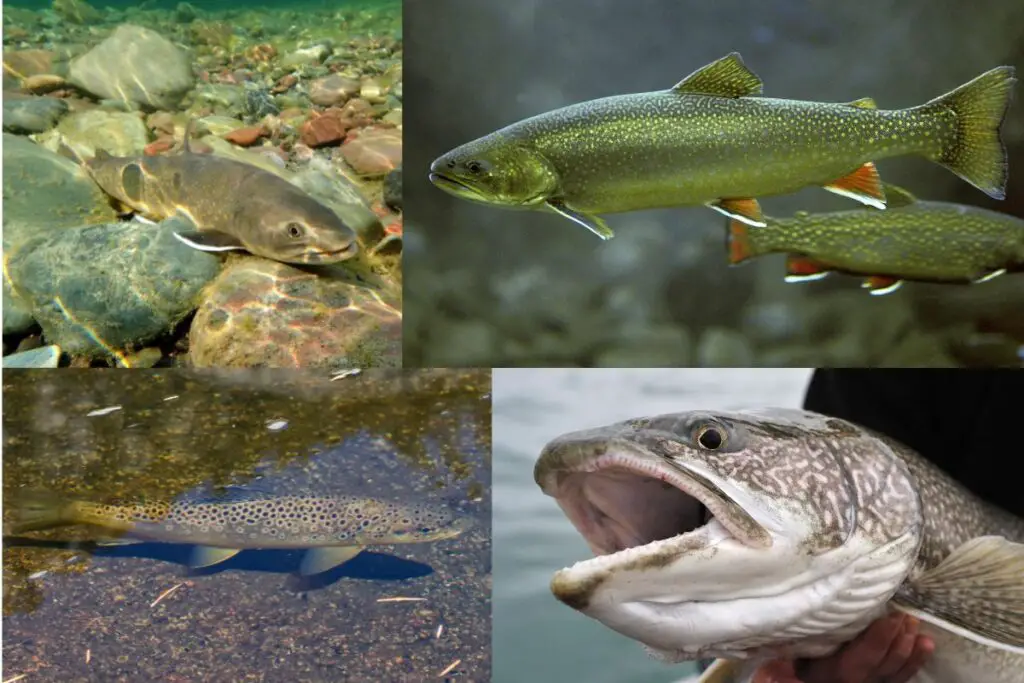
I decided to leave the chars for last, simply because it is a fairly complicated group and my understanding of the different species is lacking. There have been up to 54 different species of char identified. With 14 being from Britain alone, and 20 from Russia.
In North America, the two most famous species of char will be the Brook trout and the Lake trout.
While the most widespread species is the Arctic char, and within this grouping, due to the great amount of genetic diversity there are potentially dozen of distinct species.
At present, there are five species that are well defined.
Species of trout and char (Salvelinus)
- Arctic char (S. alpinus)
- brook trout (S. Fontinalis)
- lake trout (S. namaycush)
- bull trout (S. confluentus)
- Dolly Varden trout (S. malma)
Tidying up the loose ends, other Salmonidae species
There are a few more Salmonidae species, that I have not covered.
The taimen (Hucho) is the best example. They are closely related to Lenoks, with the two populations splitting within the last 5 million years or so. There are currently 4 recognized species within the Hucho genus. It is a bit dubious if taimen are trout or not.
The remaining Salmonidae include whitefish and graylings, but they are very far removed. With the whitefish diverging some 37 million years ago, and the Grayling diverging 43 million years ago.
Contrastly, lenoks, taimen, salmon, and trout shared a common ancestor some 25 million years ago. If you remove the Lenoks and Taimen, the other three diverged from each other within the last twenty million years ago.
How many trout species are in specific countries?
Summary
So just how many species of trout are there? Will, no one knows. Taxonomy is an imprecise science.
From a conservative viewpoint, I feel, at a minimum, there are 25 main lineages of trout spread across four genera. These all show strong genetic differences from each other. But, if the species requirements are relaxed, that number can quickly balloon to over 100, and the more taxonomists research, the more potential species candidates they can uncover.

